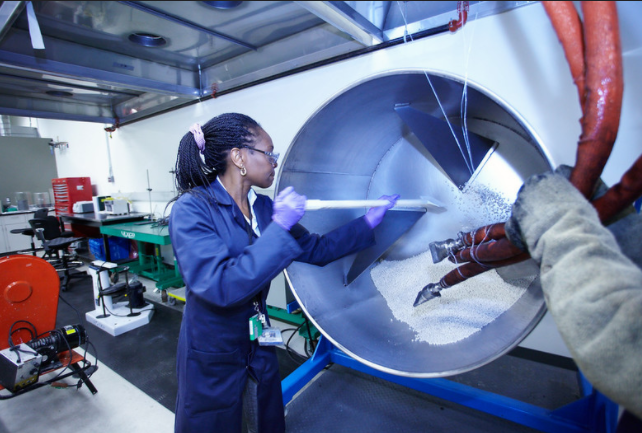Dr. Sam Suppiah, Image credit: CNLHow much could your process reduce the price of hydrogen?
It is presently too early to make these predictions, and the production costs would vary with time and scale. Currently, the copper-chlorine hydrogen production process that Canadian Nuclear Laboratories (CNL) is advancing (marketed as HCuTec) is at the development stage nearing a lab-scale demonstration. The process is amenable to scale up to the world-scale level (~100 tons/d).
 Dr. Sam Suppiah, Image credit: CNL
Dr. Sam Suppiah, Image credit: CNL
What is your process for producing it and how is it different than conventional production?
HCuTec is a clean, carbon emission-free hybrid thermochemical process. Currently, more than 80% of hydrogen is produced by fossil fuel-based processes that emit large quantities of carbon dioxide to the atmosphere. To make comparisons with existing common clean production methods, thermodynamically it is more efficient compared to the low temperature electrolysis, partly because it uses mostly thermal energy instead of 100% electrical energy.
Does it use renewable energy sources for hydrogen production?
As pointed out above, most of the energy requirement (~70%) is in the form of thermal energy and the remainder is electrical. Both the thermal and the electrical energies can also be provided by pairing this production method with nuclear, which is also a carbon-free energy technology. However, since the maximum temperature requirement is about 530°C, moderate temperature solar and nuclear technologies can also be used.
What do you see as potentially common uses for hydrogen in industry?
The current main uses of hydrogen are in fertilizer production (ammonia), chemical industries and oil refining. There is growing interest and opportunities for applications in transportation. Here in Canada, transportation represents approximately 25% of our energy use. CNL recently completed a feasibility study examining the possibilities of a hydrail commuter train system.
 Dr. Sam Suppiah, Image credit: CNL
Dr. Sam Suppiah, Image credit: CNL
With your process, would hydrogen be produced onsite for industrial applications instead of having to be transported?
Either option is possible with HCuTec. It would of course depend on many factors such as the amount of hydrogen required and the infrastructure for transporting hydrogen.
Do you foresee commercial hydrogen applications, such as for regional aviation in fuel cell/electric propulsion aircraft?
Yes, commercial hydrogen applications are noted above. We also see opportunities for hydrogen in transportation: commuter, shipping, marine and some are considering the technology for aviation. Hydrogen is also a clean energy storage solution, which can help to maximize the value of both baseload and intermittent sources within on-grid or off-grid applications.
What hydrogen storage methods are you working on and what advantages could they have in the future?
Our hydrogen storage R&D has three aspects: metal hydrides (solid), liquid organics (liquid) and underground storage. They all have unique advantages depending on the scenario and end use application.
For the purpose of decarbonization, might it be possible some day to have large cargo ships able to produce their own hydrogen onboard to power electric motors and batteries to replace internal combustion engines and bunker fuel?
Hydrogen can be produced on board by many methods but it would require both thermal and electrical energy. A Small Modular Reactor, as demonstrated in nuclear navies worldwide, could make an ideal source for this.